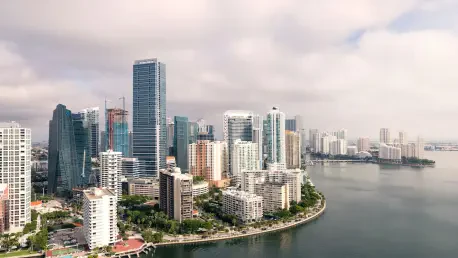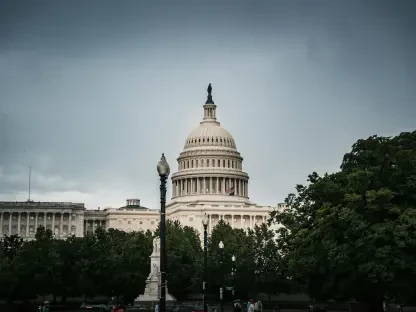As the global real estate landscape continues to evolve, a striking divergence has emerged between cooling housing markets worldwide and the alarming surge in property prices in select cities, raising concerns about potential bubbles. Recent findings from a comprehensive study by a leading financial institution reveal that certain urban centers are grappling with significant overvaluation risks despite broader signs of market stabilization. This paradox has captured the attention of investors, policymakers, and homebuyers alike, as the implications of such disparities could reshape economic strategies and housing accessibility. The spotlight falls on specific hotspots where demand, limited supply, and international investment converge to create volatile conditions, prompting a deeper examination of what drives these trends and how they might impact the future of real estate on a global scale.
High-Risk Markets Under the Spotlight
Soaring Prices in Key Urban Centers
In a detailed analysis of 21 major cities, Miami emerges as the frontrunner for the highest risk of a real estate bubble, driven by an insatiable demand for luxury oceanfront properties, particularly from Latin American buyers. This coastal hub has seen property values skyrocket, fueled by a combination of international interest and constrained housing supply, creating a market where prices often outpace fundamental value indicators. The allure of Miami as a global destination for wealth and lifestyle continues to attract significant capital, pushing affordability further out of reach for many local residents. Even as global housing markets show signs of cooling, this city’s trajectory remains sharply upward, highlighting a disconnect between localized exuberance and broader economic trends. Such conditions underscore the unique pressures faced by high-demand markets, where external investment can dramatically alter the real estate landscape, often at the expense of long-term stability.
Meanwhile, Dubai stands out for its staggering price growth, with real estate values surging by nearly 50% over the past five years, positioning it as another critical area of concern. This rapid appreciation is largely attributed to a booming population, limited availability of properties, and robust offshore investment, which together create a perfect storm for potential overvaluation. Unlike Miami, where demand is heavily tied to luxury segments, Dubai’s market dynamics reflect a broader appeal, drawing investors from across the globe seeking high returns in a fast-growing economy. The pace of this escalation raises questions about sustainability, especially as affordability becomes a growing challenge for residents. As prices continue to climb, the risk of a sharp correction looms larger, prompting analysts to monitor this desert metropolis closely for signs of overheating in an otherwise cooling global environment.
Other Cities Facing Elevated Concerns
Beyond Miami and Dubai, several other urban centers are also flagged for heightened bubble risks, including Tokyo and Zurich, which rank high due to persistent demand and limited supply dynamics. Tokyo, with its dense population and status as a financial powerhouse, struggles with housing affordability, requiring years of income for even modest accommodations, while Zurich’s high-end market continues to attract global wealth, inflating property values beyond sustainable levels. Cities like Los Angeles, Geneva, and Amsterdam are not far behind, each grappling with unique pressures from international buyers and local economic conditions that drive prices upward. These markets stand in contrast to more stable regions like London and Paris, where risks appear lower due to more balanced supply and demand. This disparity illustrates how global real estate trends can mask significant regional variations, necessitating tailored approaches to address overvaluation risks.
Affordability remains a critical issue across many of these high-risk cities, with Hong Kong leading as the least affordable market, where purchasing a basic apartment demands over a decade of income for the average earner. This stark reality is mirrored, to a lesser extent, in cities like Tokyo and Paris, where the gap between income and housing costs continues to widen, squeezing middle-class buyers out of the market. The persistent challenge of affordability not only fuels bubble risks but also raises broader questions about economic inequality and access to housing as a fundamental need. As these cities navigate the tension between attracting global capital and ensuring livable conditions for residents, the outcomes could set precedents for how urban centers manage growth and investment in the coming years. Policymakers face the delicate task of balancing these competing interests to prevent potential market disruptions.
Broader Market Trends and Policy Implications
Shifting Sentiments Among Homebuyers
In the United States, homebuyer sentiment is undergoing a notable shift as high mortgage rates reshape expectations and behaviors in the housing market. A recent survey indicates a growing acceptance of rates above 6%, with the percentage of buyers willing to commit rising from 41% to 52% over the past year, reflecting a pragmatic adjustment to prevailing economic conditions. However, a significant portion still holds out hope for rates to fall between 4.5% and 5.5%, suggesting a reservoir of pent-up demand that could flood the market if borrowing costs decline. This evolving mindset highlights the resilience of prospective buyers, even as affordability challenges persist, and underscores the critical role that interest rates play in driving housing activity. As economic indicators like inflation and labor market trends continue to fluctuate, the balance of buyer confidence and market realities remains a key area to watch.
Alongside this adaptability, caution is evident in home price expectations, with over half of American homeowners anticipating stagnant or declining values in the next year, a sharp increase from earlier sentiments. Only a small fraction predicts significant drops, indicating a tempered outlook rather than outright pessimism, shaped by broader economic uncertainties and cooling market signals. This shift in perception aligns with global trends of reduced bubble risks in many regions, yet it contrasts sharply with the exuberance seen in cities like Miami and Dubai. The divergence between localized price surges and widespread caution among buyers suggests a complex interplay of factors at work, from regional investment patterns to national economic policies. Understanding these nuances is essential for stakeholders aiming to navigate the unpredictable terrain of real estate in the current climate.
Economic Indicators and Future Interventions
The performance of real estate-related investments offers additional insight into market dynamics, with exchange-traded funds focused on mortgage and property sectors showing lackluster results over recent years. This underperformance reflects subdued activity in many housing markets, as high borrowing costs and economic uncertainty dampen transaction volumes and investor enthusiasm. However, there is growing anticipation of Federal Reserve rate cuts, which could potentially lower mortgage rates to around 5%, spurring renewed activity in housing and related stocks. Such a development might provide a much-needed boost to markets struggling with affordability and sluggish growth, though the timing and scale of any rate adjustments remain uncertain. The prospect of lower rates introduces a hopeful note, yet it also carries risks of reigniting speculative fervor in already overheated markets.
On the policy front, discussions are intensifying around potential interventions to address housing challenges, particularly in the U.S., where high borrowing costs and limited supply continue to strain affordability. Speculation abounds about a national housing emergency declaration, with some analysts assigning a notable probability to such a measure being enacted to tackle systemic issues. Treasury officials have pointed to the dual pressures of expensive financing and inadequate housing stock as critical barriers to market stability, prompting calls for innovative solutions. While no concrete actions have been confirmed, the mere possibility of bold policy moves signals the urgency of addressing real estate challenges at a national level. Looking back, the discourse around these interventions reveals a collective recognition of the need for strategic planning to mitigate risks and ensure sustainable growth in the housing sector.









